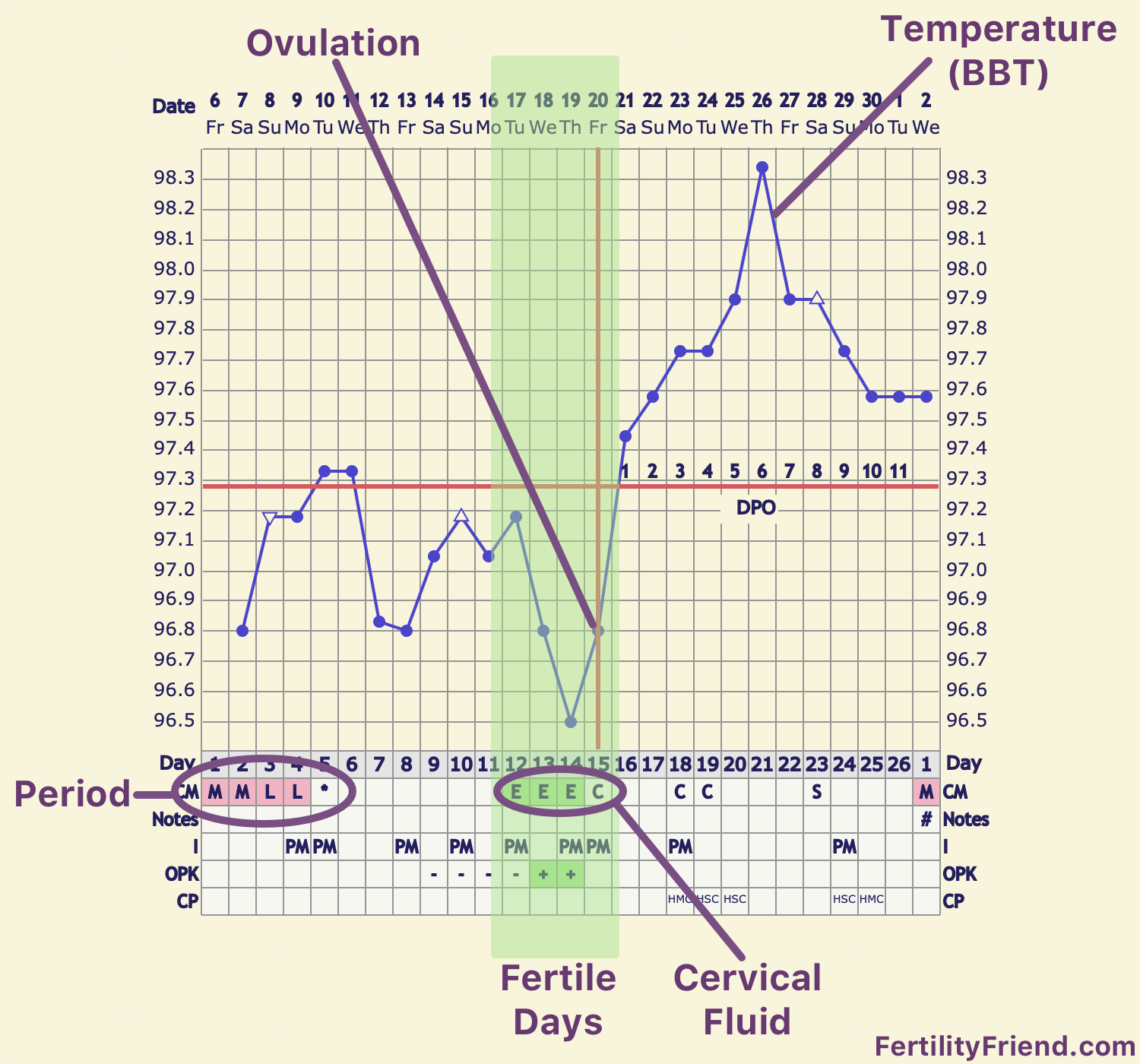The Fertile Window
Lesson 1
Lesson Objectives:
-
Understand the concept of "the fertile window."
-
Know which days are the most fertile days.
-
See how fertility charting can help you find your fertile days and increase your conception chances.
Major Points in this Lesson:
-
There are just a few days each cycle that you can get pregnant.
-
The time during your cycle when intercourse may result in conception is called "the fertile window."
-
The maximum length of the fertile window is six days.
-
The most likely days that intercourse will result in conception are the two days before ovulation and the day of ovulation.
-
Your fertility pattern is unique to you. You may not have a "textbook" fertility pattern.
-
Charting your fertility signs will help you find your own most fertile days and pinpoint your ovulation date.
-
A significant factor for a large portion of couples who are experiencing conception difficulties is poor intercourse timing relative to ovulation.
-
Couples who "focus" intercourse in their fertile window have significantly higher conception rates.
Sometimes referred to as "Fertility Awareness" or "Natural Family Planning," fertility charting is based on the understanding that we can identify the fertile window- the days when conception is possible- by observing our natural fertility signals.
In each cycle there are just a few days that make up the fertile window.
Fertility charting thus involves observing and recording your fertility signs so that you can easily see your daily fertility status and identify your most fertile time. It is highly effective because your body provides clues (fertility signs) that tell you about your fertility status throughout your cycle.
The primary fertility signs are:
-
your basal body temperature (BBT) which rises after ovulation.
-
your cervical fluid, sometimes called cervical mucus (CM) which gets increasingly wet, clear and stretchy as ovulation approaches.
(How to observe and chart these signs will be discussed in greater detail in your next lessons).
The days when conception is possible are the days just before and including the day of ovulation. Based on the maximum lifespan of human sperm and ova, (five days for sperm and one day for the ovum) this fertile window is at most six days. This maximum window is thus made up of the five days before ovulation and the day of ovulation.
Though pregnancy is technically possible during this six day window, most pregnancies actually can be attributed to intercourse from within two days before ovulation up to the day of ovulation.
This makes for a practical fertile window of just three days each cycle: the two days before ovulation and the day of ovulation itself.
Charting your fertility signs helps you to find those days so that you can best time intercourse to get pregnant. Couples who are aware of their fertile time and focus intercourse during this time have been found to have much higher conception rates than couples who are unaware of their most fertile time.
You may have been told that you ovulate or are most fertile on day 14 of your menstrual cycle, mid-cycle, or even 14 days before your period is expected. These assumptions are based on broad averages and they may not be true for you, even if your cycles are regular.
Your own fertility pattern is unique to you and charting your fertility will help you to see it and find the days that you are most likely to conceive.
To maximize your conception chances, have intercourse every day or at least every other day during your fertile time until your chart shows a clear and sustained thermal shift.
The chart below demonstrates how fertility charting can identify your fertile days and your ovulation date.
Your next lessons will discuss how to find those fertile days by charting your cervical fluid and basal body temperature (BBT) fertility signs.
Further reading:
Next Lesson: Charting Essentials
Note: Please check this lesson within the app to access the lesson quiz.

